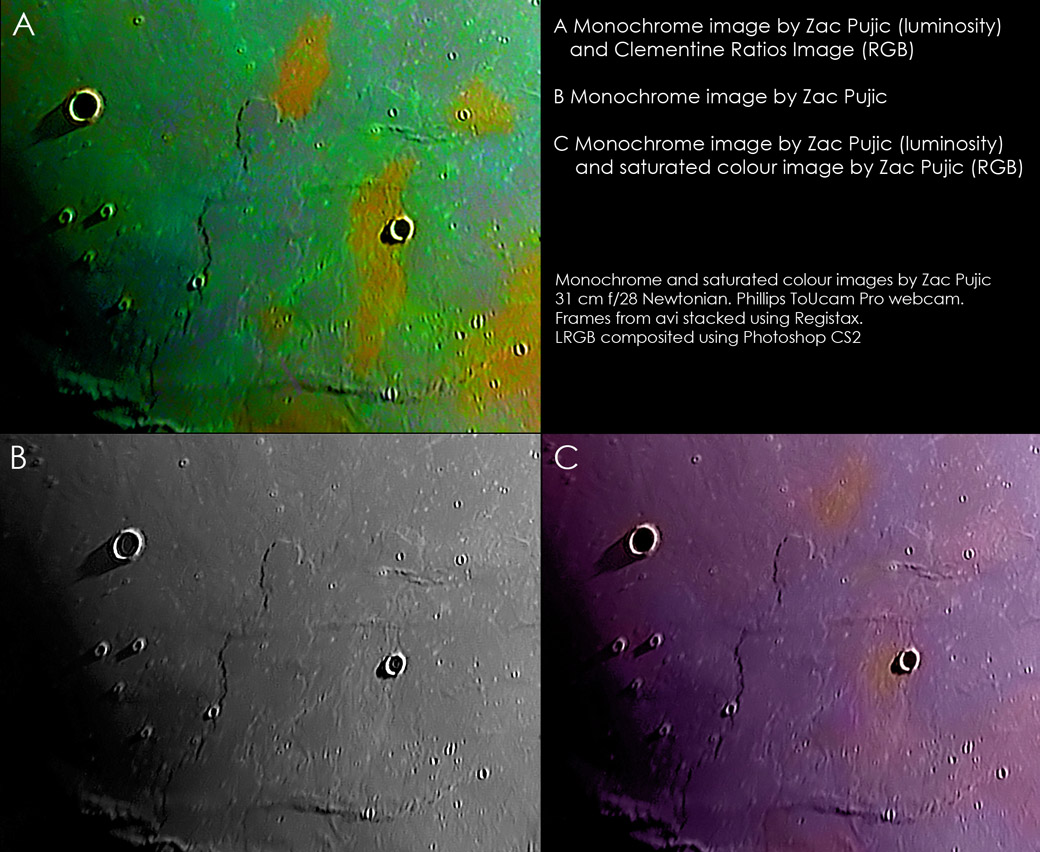
image by Zac Pujic
The fifth photo of the Imbrium lava flow has been taken. The first four were by K.C. Pau, and now Zac provides a new image with color information as well. The larger crater on the left is Carlini (diameter 11 km) and the smaller to the right is McDonald (8 km). The Imbrium flow is thought to be the youngest on the Moon, largely because is has the best defined edges and few superposed impact pits. It is wide enough to be easily seen, except that it is so low (about 35 m) that the Sun angle must be just right to catch it. Zac’s normal image is labelled B, and the other two were created by adding color from Clementine (A) and one of Zac’s famous saturated color images (C). Looking at image (A) we see that most of this part of Imbrium is green, which is characteristic of the younger, titanium-rich Imbrium lavas. The lozenge-shaped orange patches (also visible in image C) are the same as the older, titanium-poor Imbrium lavas common on the eastern third of Imbrium. Thus, these orange lozenges are probably older lavas that have been covered by thin layers of young blue flows. In fact, Zac’s image shows the orange stuff is topographically lower and somewhat rougher than the smooth, plateau-like blue flows. Usually older lavas are preserved in slightly elevated hills that weren’t submerged by younger lavas. If the orange stuff really is lower that implies that the blue flows are rather sparse and don’t fully cover the pre-existing terrain. Old, titanium-poor lavas probably underly all of Imbrium
Chuck Wood
Technical Details:
31-cm Newtonian at f/28 + Phillips ToUcam Pro webcam.
Zac comments, I used my monochrome image as the luminosity channel in composite images using either a Clementine ratios image or my own saturated colour image. The Clementine and my saturated colour composites match satisfactorily. The Clementine composite shows the orange regions more comprehensively than my saturated visible light image composite (Panel C). Clearly the 11 filters on Clementine can differentiate a mare compositional difference (blue vs green) which I cannot using saturated visible light.
Related Links:
Rükl plate 10
Zac’s website
Yesterday's LPOD: The Longest Rille
Tomorrow's LPOD: The Baby & the Skull
COMMENTS?
Register, Log in, and join in the comments.



